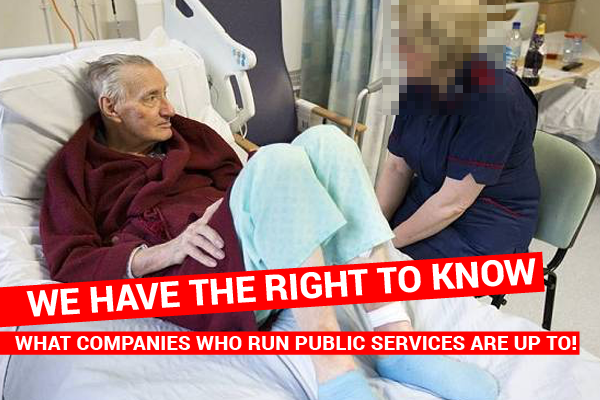

Apr 1st, 2016
Making a Freedom of Information request – a guide
By Rachel Oliver
There are a couple of different ways to submit an FOI request.
1. The easiest way is to submit a request is via this website: https://www.whatdotheyknow.com/
Here you simply click on the public body you want information from, then write what information you’re after into a simple online form.
The advantages of using this website are:
– they will submit the request for you to the public body (they have a list of tens of thousands of public authorities and bodies!)
– to the right individual within the public body
– they email you as soon as they get a response
– you can search through thousands of requests that have been made in the past (with keyword searches)
– it’s free
Disadvantages:
– the response they receive is made public on their website straight away. (This might be undesirable if you want to use the information you acquire in a shock media exposé or news story, for example).
2. The other way to make an FOI request is to do it yourself:
The advantages of this method:
– the response to your request is not made public until you choose to make it so (by writing to your local paper or submitting a press release to local media outlets, for example). The response is sent to you only.
Disadvantages:
– It involves a bit more work, to make sure you find the right person who deals with FOI requests within the organisation you’re submitting the request to. But a simple phone call to the reception of the body should help you find this out.
– You have to remember to follow up your request if you don’t get a response within 20 working days.
Tips on making a successful FOI request (ie getting the answer to your request!):
NOTE This applies to both methods above.
– Choose the right department/organisation. Do a bit of research to make sure the department you are writing to with your request has the information you’re after. It’s a good idea to give them a call before you make the request. Then you can ask for the email address of the assigned person who deals with FOI requests too.
– Make your request as specific and clear as possible. Public bodies have to respond to your request within 20 working days, but they could come back to you on the 19th day and say that your request wasn’t clear enough and they haven’t understood the information you require.
– Make sure your request is reasonable, and if appropriate, time-bound. Public bodies can deny an FOI request on the basis that it will take one person more than the three and a half days they can dedicate to responding to one request.
– Remember that it’s your right to request information that is in the public interest, so don’t be put off by initial rejections!
(- Read more about why FOI requests can be rejected here and see examples below.)
More information:
These websites have some really helpful tips and information:
Information Commissioner’s Office
The Campaign for Freedom of Information website
Good luck!
——————————————————–
An example of a successful FOI request is:
Dear NHS Airedale, Wharfedale and Craven Clinical Commissioning Group,
I am writing to ask for the name and contact details of the “Head of Continuing Health Care Services” at the CCG and the “Head of Procurement” (person responsible for the procurement of products and service that relate to the CCG’s needs and requirements).
Please could you also provide the details of the area/s they cover (if they cover more than x1 CCG)
I have outlined below the format in which you can fill out the information clearly.
Head Of CCG
Name:
Job Title:
Email:
Phone:
Area cover/s:
Yours faithfully,
XXXXXX
An example of an unsuccessful FOI is:
Dear NHS England,
I should like to know the number of doctors who have used their power & influence to obtain confidential information about a patient, claiming to be a “family friend”.
Yours faithfully,
XXXXXX
This FOI request was rejected on the grounds that it went to the wrong organisation. NHS England’s response was:
NHS England does not hold this information.
It may help if I explain that the NHS in England is not the same as ‘NHS
England’. The NHS in England is not a single organisation, but is made up
of a range of organisations including Hospitals, Clinical Commissioning
Groups (CCGs), Ambulance Trusts and other organisations. As such, any
recorded information which NHS England may be able to provide in response
to an FOI request will generally relate to the services commissioned by
NHS England.
An example of a partially successful FOI request is:
Dear Department of Health,
I would like all copies of all of the clinical trials for each vaccine on the current childhood immunisation schedule. Prior to their marketing. The ones you examined before allowing them to be used on our children in England. ANd if you had any prior information from other countries as to there dangers. For example like the Urabe strain on MMR which the UK purchased from Glaxo despite knowing it injured children in Canada at a high rate?
Yours faithfully,
Ms XXXXXX
This request was rejected on the basis that the questions asked were too many and too complex. The response, however, was helpful, in advising how best to get a positive response:
Dear Ms XXXXXX, don’t give up. Split it down to individual or simpler questions and if necessary get others to ask the questions for you.















